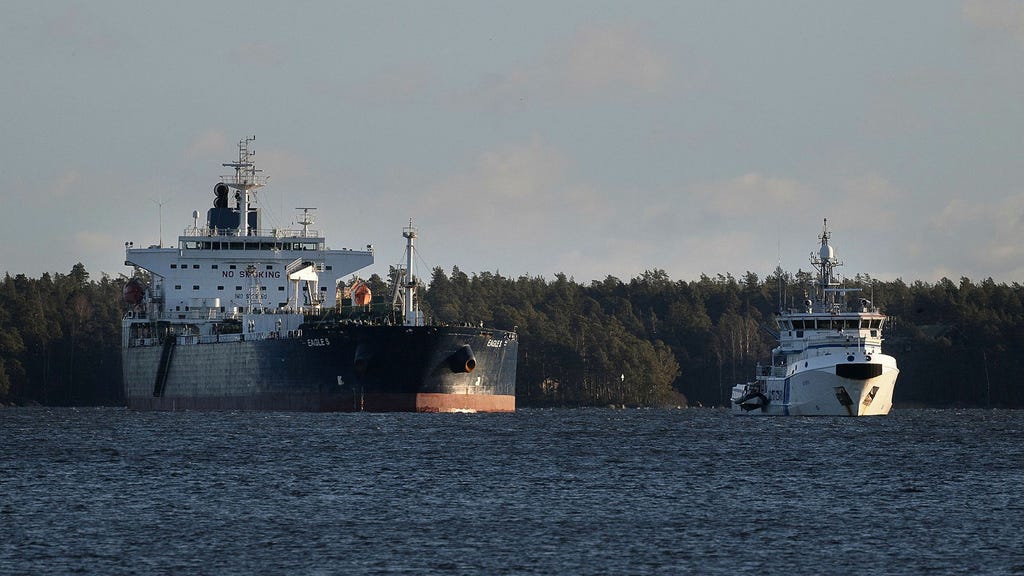The seizure of the unnamed tanker by Finnish authorities has sparked controversy, with the vessel’s legal representative, Advokat Herman Ljungberg, vehemently criticizing the actions taken. Ljungberg argues that the incident, involving damaged undersea cables, is a commonplace occurrence in maritime operations and does not warrant such a drastic response. He contends that the Finnish authorities have overreacted, causing undue hardship to the shipping company and its crew. Ljungberg’s position hinges on the assertion that cable damage is an inherent risk in navigating increasingly congested waters, and that the current response sets a dangerous precedent for future incidents. He emphasizes the need for a more balanced approach, suggesting that the focus should be on collaborative investigations and preventative measures rather than punitive actions.
Ljungberg’s critique extends to the lack of clarity surrounding the specific allegations against the tanker. He points out the absence of concrete evidence directly linking the vessel to the cable damage, suggesting that the seizure is based on suspicion and circumstantial evidence rather than hard facts. This lack of transparency, he argues, raises serious concerns about due process and the rights of the shipping company. He stresses the importance of a thorough and impartial investigation to determine the true cause of the incident and apportion responsibility accordingly. Furthermore, Ljungberg questions the proportionality of the seizure, arguing that the economic and reputational damage inflicted on the shipping company far outweighs the alleged offense.
The legal arguments put forward by Ljungberg highlight the complexities of maritime law and the challenges posed by incidents involving undersea infrastructure. He underscores the need for international cooperation in establishing clear guidelines and protocols for investigating and addressing cable damage. The current legal framework, he suggests, is inadequate to handle the increasing frequency of such incidents, particularly in the context of growing maritime traffic and the expansion of undersea cable networks. Ljungberg advocates for a more proactive approach, emphasizing the importance of preventative measures such as improved charting, real-time monitoring of cable routes, and enhanced communication between maritime operators and cable owners.
The controversy surrounding the tanker seizure also raises broader questions about the balance between national security concerns and the freedom of navigation. While acknowledging the importance of protecting critical infrastructure, Ljungberg cautions against overzealous enforcement that could impede international trade and disrupt maritime operations. He argues that the Finnish authorities’ actions in this case could set a precedent for other countries to adopt similarly restrictive measures, potentially leading to a chilling effect on maritime activity. Ljungberg stresses the need for a nuanced approach that recognizes the legitimate interests of both national security and the maritime industry.
Furthermore, the incident underscores the vulnerability of undersea cables, which are essential for global communication and data transfer. Ljungberg highlights the need for increased investment in cable protection and resilience, including the development of more robust cable designs and the implementation of redundant systems. He also advocates for greater collaboration between governments, cable operators, and the maritime industry to mitigate the risks of cable damage and ensure the continuity of essential communication networks. The incident serves as a wake-up call, highlighting the need for a more comprehensive approach to cable security that encompasses both preventative measures and responsive mechanisms.
In conclusion, the seizure of the tanker and the ensuing legal battle underscore the complexities of maritime law in the 21st century. Advokat Herman Ljungberg’s criticisms of the Finnish authorities’ actions highlight the need for greater clarity, transparency, and proportionality in addressing incidents involving undersea cables. The case also raises broader questions about the balance between national security and freedom of navigation, the vulnerability of critical infrastructure, and the need for international cooperation in developing effective strategies for cable protection and incident response. The incident serves as a catalyst for a broader discussion about the evolving challenges of maritime operations and the need for a more proactive and collaborative approach to ensuring the safety and security of undersea cable networks. The outcome of this legal battle will likely have significant implications for the future of maritime law and the regulation of activities affecting undersea infrastructure.














